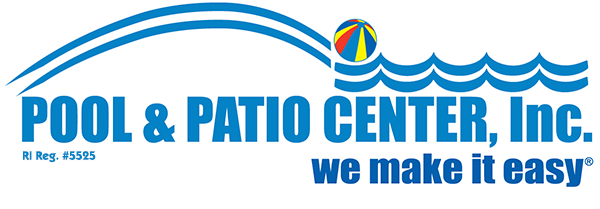Swimming Pool Water Chemistry
Clean, Clear Healthy Water
WHEN IS THE BEST TIME TO TEST YOUR POOL WATER?
- After pool is full
- After pool water has circulated for at least 8 hours
- Before adding water chemistry products
- Before adding a shock treatment
- When chlorine or bromine level is 5 ppm or lower
- After taking a sample from midway between the shallow and deep end; at least 18-inches below the water surface; away from skimmers, return lines or cartridge area
- As soon as it is removed from your pool
Alkalinity Keeps Your pH in Range and is the KEY to Water Balance
BALANCED WATER – Clear pool or spa water is not necessarily sanitized or balanced. After all, the water in your toilet bowl is clear, but not sanitized or balanced! Balanced water prolongs the life of your pool and spa equipment and ensures healthy swimming. Your family’s health depends on balanced water chemistry.
WHAT IS CHLORINE’S EFFECTIVENESS AT DIFFERENT pH LEVELS?
WHAT ARE THE FACTORS THAT CONTRIBUTE TO ALGAE GROWTH?
- At pH Level 7.2 — 66% of Chlorine is Effective
- At pH Level 7.5 — 48% of Chlorine is Effective
- At pH Level 7.8 — 33% of Chlorine is Effective
- At pH Level 8.0 — 21% of Chlorine is Effective
WHAT ARE THE FACTORS THAT CONTRIBUTE TO ALGAE GROWTH?
- Warm Water
- Sunlight
- High pH level
- Low free chlorine level
- Poor filtration
- Poor circulation
- Short filter cycles
- High bather load
- High total dissolved solids (TDS) level
Wall Brushes are the Single Most Important WEAPON in Fighting Algae!
ARE YOU HAVING A HARD TIME CLEARING YOUR POOL WATER?
The majority of water chemistry problems are related to poor filtration, poor circulation or an inadequate shock treatment schedule. Your problems will not be corrected by adding more water chemistry products. Before you correct any water chemistry problem, inspect the operation of your filter, pump and/or cartridge.
Check the following:
MORAL OF STORY: Keep pH in balance and do not overdose on metal algaecides.
The majority of water chemistry problems are related to poor filtration, poor circulation or an inadequate shock treatment schedule. Your problems will not be corrected by adding more water chemistry products. Before you correct any water chemistry problem, inspect the operation of your filter, pump and/or cartridge.
Check the following:
- Is your filter sand older than 3-5 years? If so, replace only with white silica (not brown) filter sand. Have you chemically cleaned your filter DE fingers or grids recently?
- Have you chemically cleaned your filter DE fingers or grids recently?
- Have you chemically cleaned your filter cartridge recently?
- Are you backwashing your sand filter often? Only backwash when the water returning to the pool is sluggish. A recently backwashed sand filter only traps the largest particles that are suspended in your pool water; as the sand gets dirtier, the sand will filter smaller and smaller particles.
- Are your water return jets pointed downward at a 45-degree angle away from the skimmer for the best circulation? Jets that are pointed towards the pool surface or pointed straight result in poor water circulation. Disturb that entire body of water by pointing the jets downward.
- Low pH causes corrosive water.
- Corrosive water causes metals to come out of solution and stain pool surfaces (there are metals in all water sources).
- Corrosive water attacks metal items (ladders, copper heating elements, etc.) and introduces more metals into the water.
- As pH or chlorine rises and/or fluctuates, stains are deposited on pool surfaces.
- Overdosing on metal algaecides introduces more metal into water.
MORAL OF STORY: Keep pH in balance and do not overdose on metal algaecides.
|
WATER CHEMISTRY FACTOR
Free Available Chlorine pH Total Alkalinity Calcium Hardness Chlorine Stabilizer (Cyanuric Acid) Metals (Iron, Copper, etc.) Total Dissolved Solids (TDS) |
IDEAL RANGE
1 – 3 ppm 7.2 – 7.6 80 – 120 ppm 180 ppm – 400 ppm 30 ppm – 80 ppm 0 ppm Less than 1500 ppm |






